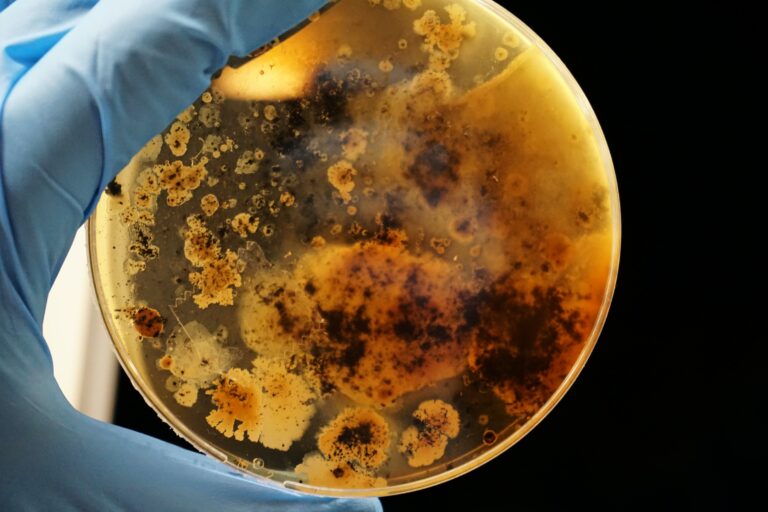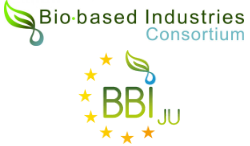Authors: Kristie Tanner, Darwin & Christian Sonnendecker, University of Leipzig
Microorganisms can be found inhabiting even the most remote and extreme locations of our planet. Their extraordinary array of metabolic routes coupled with their rapid doubling time and high evolution rate, make them capable of adapting to almost any environment. For example, if an environment is enriched in a specific polymer, there is a very high chance of finding microorganisms that can obtain energy from this polymer or its derivatives. This natural ability to ‘consume’ the polymer with the aim of ensuring microbial growth and survival can be exploited for other purposes, for example, for bioremediation. Bioremediation is a biotechnological process in which biological systems (for example, bacteria or fungi) are used to remove or neutralize environmental pollutants.
From nature to the lab: culturing and selecting new strains and enzymes for bioremediation
The main goal of the ENZYCLE project is to isolate new microbial strains and identify new enzymes that can be used for the biodegradation of different plastic polymers, such as PP, PE or PET. This can be done using a culture-dependent approach in which microorganisms are isolated, screened and characterized in the laboratory to select the most promising strains and consortia for plastic biodegradation.
A promising starting point for this approach is to collect environmental samples that are naturally enriched in these polymers, such as samples from plastic recycling plants, plastic production plants or environmental plastic waste. Microorganisms can be directly isolated from these samples using a traditional culture-based approach, or they can be further enriched in potential polymer-degrading microorganisms by subjecting them to adaptive evolution using the polymer of interest as sole carbon source (this way, only the microbial strains able to use this polymer as carbon and energy source will grow). Frequently, these natural biodegradation processes require the combined action of several microorganisms, in other words, a microbial consortium. High throughput DNA sequencing of marker genes can be used to identify which microorganisms have a key role in plastic biodegradation during the adapted evolution approach, and this information can be used to design artificial microbial consortia for plastic biodegradation. But how can we identify what enzymes are involved?
One way is to use comparative metatranscriptomics to analyze differential gene expression. This technique detects and quantifies the different genes that are expressed in a sample. The key is to compare the proteins produced by the microbial strain or consortium when grown on a rich carbon source, and those produced when grown in a media with the polymer as sole carbon source: this will provide insight into what genes are required for biodegradation of the polymers!
Although cultivation has its drawbacks, as a large fraction of the existing microorganisms cannot be cultivated in laboratory conditions, using a whole cell approach does have some benefits. For example, it can enable the detection and characterization of biodegradation pathways in which multiple enzymes or even multiple microorganisms are involved. Also, these microbial strains can be naturally adapted to polluted environments, meaning they are sufficiently resistant and robust to be used directly in bioremediation applications without loosing viability.
New blueprints from metagenomes
As previously mentioned, only a small fraction of the microcosm can be cultivated under laboratory conditions. As a result of the isolation of cultures, a large part of the information on the microbial community is lost. In the search for new enzyme candidates, however, it is worth to take a deeper look into the unknown. Extraction and analysis of the total DNA from an environmental sample (metagenomic DNA) makes it possible. This mixed DNA can, for example, be cut into smaller fragments and cloned into an expression vector to generate a library. Alternatively, a DNA library can be generated by using degenerate primers that bind to conserved regions of the corresponding genes. Consequently, the desired genes can be fished out from the DNA pool. With such a focused strategy, the screening demand can be reduced while increasing the fitness of the library.
After recombinant expression, the protein library can be tested for activity. This can be performed on agar plates where each colony is supposed to carry one fragment, expressed by the host strain. The translated fragment can now be tested for activity, e.g. by adding small polyester particles to an agar plate. This causes a turbidity of the agar and an ester-degrading activity is signalized by the formation of a clear halo zone around the corresponding colony. Our tasks in ENZYCLE have motivated us to develop a revolutionary and potent screening system to track plastic degradation in real-time under high precision. The system is based on electrochemical impedance spectroscopy and allows us to screen up to more than 1000 candidates simultaneously.
Due to the rapid development in the field of DNA sequencing, it is easily possible to read the metagenomic DNA on a large scale and to perform in silico analysis. Sophisticated search algorithms, such as hidden markov models, also detect remote homologs. This allows us to unveil many, so far unknown and potentially game changing enzyme candidates. Each enzyme that has been characterized contains valuable information that helps us to optimize the search process and to engineer optimized enzyme variants. Beyond, the analysis of the assembled DNA reads also contains further valuable information, such as the relative species abundance or potential metabolic pathways of the community. The high performance of deep sequencing technologies even allows the reconstruction of metagenome-assembled genomes – thus, shedding a little more light on the terra incognita of the microcosm.
(Picture credits: Unsplash – Adrian Lange)




